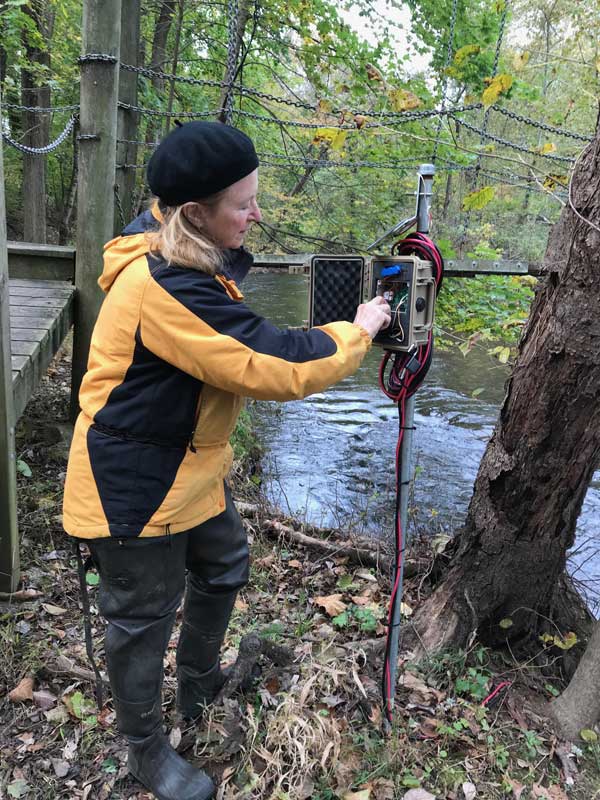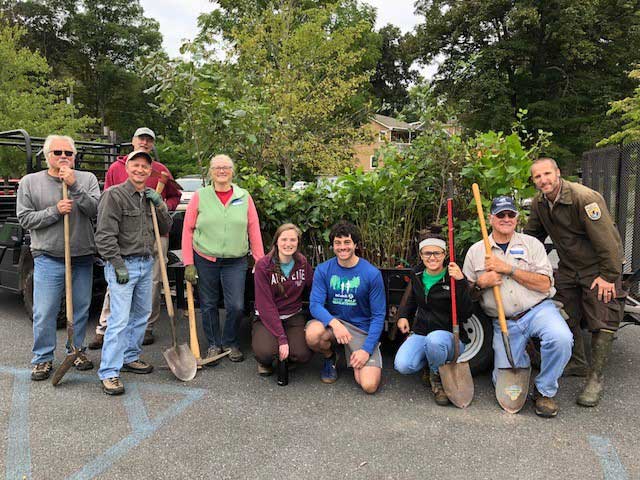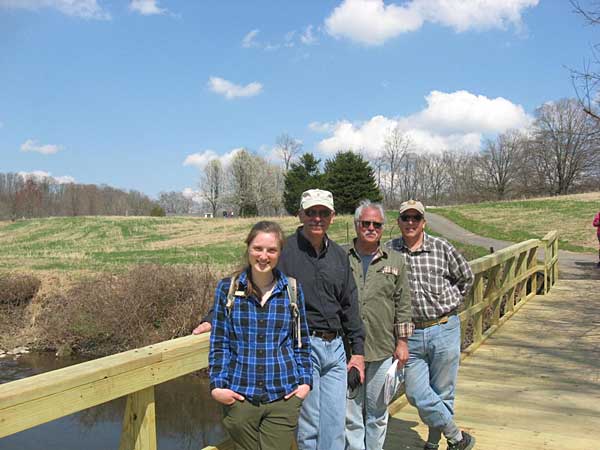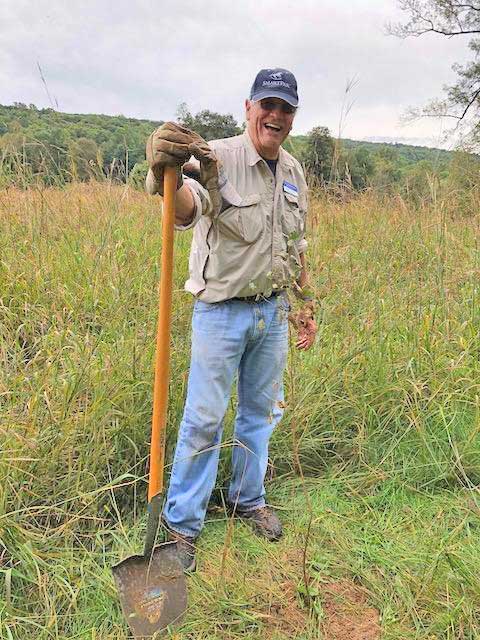To help citizen scientists become better volunteer stream monitors, Stroud Water Research Center has partnered with dozens of organizations within the Delaware River Watershed, including Penn State Extension’s Master Watershed Steward (MWS) program. The partnership is partially funded by the William Penn Foundation to protect a valuable source of fresh water for more than 15 million people across four states.
The MWS program, which this year was awarded the Governor’s Award for Environmental Excellence, turns citizens into a managed, educated, organized volunteer force addressing local conservation priorities. It’s a fairly rigorous program. To become a Master Watershed Steward, volunteers must complete a minimum of 40 hours of training and fulfill 50 hours of volunteer service, with ongoing volunteer and training hours required in subsequent years.
As of August 2018, there were 312 Master Watershed Stewards in 12 counties in Pennsylvania working with dozens of conservation partners. Within the Delaware River Watershed, these volunteers planted 1,205 trees, installed 212 rain barrels, and collected samples from 26 streams to monitor water quality in 2018.
John Jackson, Ph.D., who is a co-leader on the project, explains, “With volunteers, we can collect more data, but it’s important to ensure that data is high-quality. One way we’re doing that is through workshops in which we provide instruction on stream ecology and chemistry, the use of monitoring equipment, and science-based restoration methods.”
More and better data then allows scientists — citizen scientists among them — to understand healthy streams and how streams respond to stressors like climate change and restoration methods like the planting of streamside forests.
Neuropsychologist by Day…

Carol Armstrong maintaining a stream sensor station.
Stroud Center volunteer Carol Armstrong is one many citizen scientists monitoring the health of local waterways and helping to ensure a cleaner freshwater future. She is also a certified Master Watershed Steward.
In the summer of 2016, she began by volunteering to assist in planning and planting trees and shrubs. “I had the pleasure of seeing them grow beautifully the next year, increasing the fen’s habitat diversity,” she recalls. The next year, she helped plant rain gardens designed to infiltrate much more precipitation than open lawn, thus recharging the underlying aquifers and keeping sediment and other contaminants from reaching White Clay Creek.
Since then, she has volunteered to work with the Stroud Center to measure the effects of effluents into streams from water and sewage treatment facilities, commercial centers with their impervious parking lots and roads, residential areas, upstream dams, and other types of land use. Armstrong is responsible for troubleshooting the data from about 50 environmental sensor stations semiweekly, and maintaining, sampling, and taking quality-control measurements from three stations. She also is developing hydrologic and sediment rating curves on Pickering Creek to analyze stormwater impacts and sediment loads in relation to watershed land use and management activities.
Professionally, Armstrong is a neuropsychologist. In her free time, she has seized opportunities to learn about watershed stewardship and take action.
“I can only hint at how much I have learned,” Armstrong says.
It’s given her a deeper understanding of the conditions that support biodiversity and a greater awareness of how humans are a part of nature. “Society has the data and experience to show that human impacts are reducing biodiversity and the qualities of the natural spaces, but critical sources of scientific research such as Stroud Water Research Center need much more support to inform us so that future choices are made more wisely.”
More Master Watershed Stewards Making a Difference

Jim Vogt (left) with volunteers, including four Master Watershed Stewards, planted 360 trees on September 23 at the Cherry Valley National Wildlife Refuge. Photo: Susan Neely
Jim Vogt is president of the Aquashicola/ Pohopoco Watershed Conservancy (APWC), which monitors two stream sensor stations. After taking the Master Watershed Steward class in 2014, he brought many resources and fresh ideas to APWC.
“I think one of the best ideas was to add an informal macroinvertebrate survey to our stream sampling. I had learned how important macros are as an indicator of stream health.
As of this writing, APWC now has four MWS folks as active members. This has been a huge boost that makes APWC a better organization.” In 2017, he started and is now the coordinator of Monroe County’s MWS program.

John Lyman (center left) with Annie Mikol (left; Monroe County Conservation District), Jim Vogt (center right; Monroe County MWS), and fellow steward Geoff Rogalsky at a Master Watershed Steward course. Photo courtesy of John Lyman.

Dean Neely planting trees for clean water at the Cherry National Valley Wildlife Refuge on a former golf course in Stroudsburg, Pennsylvania. Photo courtesy of Dean Neely.
John Lyman is a board member of the Tobyhanna Creek/Tunkhannock Creek Watershed Association. Newly retired, he has been attending the Master Watershed Steward trainings and plans to spend more time on watershed protection.
“Besides the usual stuff that you would expect in a watershed program, the course has had field trips to look at wastewater systems, aquatic bugs, what a good stream and not-so-good stream look like, and a host of other things. This is a fabulous course that has been a real eye-opener.”
Dean Neely recently retired from private practice as an equine veterinarian and was searching for methods to help in preserving his local environment in the Poconos. Since his MWS training in the spring of 2018, Neely has learned about methods to restore cool-water stream habitats for healthy trout populations and helped restore streams on retired golf courses with the planting of streamside forests.
More Citizen Science Opportunities
- EnviroDIY.org, a community for do-it-yourself environmental science and monitoring
- Leaf Pack Network, an international network of teachers, students, and citizen monitors investigating their local stream ecosystems



